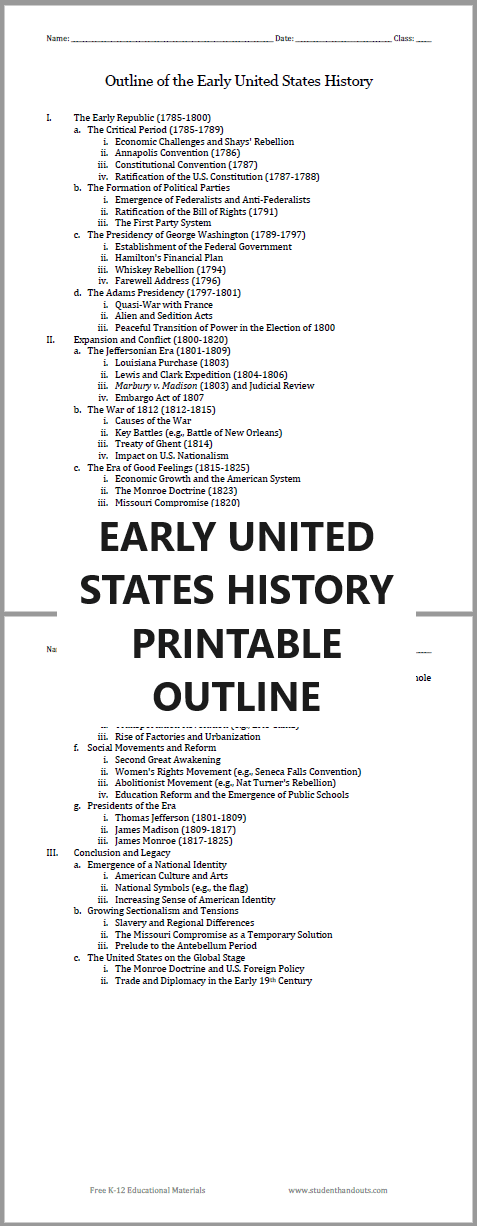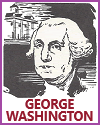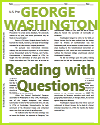| Early United States Printable Outline |
|---|
| www.studenthandouts.com ↣ U.S. History ↣ Forming a National Government ↣ Outlines & PPTs |
 I. The Early Republic (1785-1800)
I. The Early Republic (1785-1800)a. The Critical Period (1785-1789) i. Economic Challenges and Shays' Rebellion ii. Annapolis Convention (1786) iii. Constitutional Convention (1787) iv. Ratification of the U.S. Constitution (1787-1788) b. The Formation of Political Parties i. Emergence of Federalists and Anti-Federalists ii. Ratification of the Bill of Rights (1791) iii. The First Party System c. The Presidency of George Washington (1789-1797) i. Establishment of the Federal Government ii. Hamilton's Financial Plan iii. Whiskey Rebellion (1794) iv. Farewell Address (1796) d. The Adams Presidency (1797-1801) i. Quasi-War with France ii. Alien and Sedition Acts iii. Peaceful Transition of Power in the Election of 1800 II. Expansion and Conflict (1800-1820) a. The Jeffersonian Era (1801-1809) i. Louisiana Purchase (1803) ii. Lewis and Clark Expedition (1804-1806) iii. Marbury v. Madison (1803) and Judicial Review iv. Embargo Act of 1807 b. The War of 1812 (1812-1815) i. Causes of the War ii. Key Battles (e.g., Battle of New Orleans) iii. Treaty of Ghent (1814) iv. Impact on U.S. Nationalism c. The Era of Good Feelings (1815-1825) i. Economic Growth and the American System ii. The Monroe Doctrine (1823) iii. Missouri compromise (1820) iv. Growing Sectional Tensions d. Expanding Westward i. Westward Migration and Settlement ii. Land Policies and the Growth of Agriculture iii. Native American Displacement and Conflicts (e.g., Creek War, Seminole Wars) e. The Industrial Revolution i. Growth of Manufacturing and Industrialization ii. Transportation Revolution (e.g., Erie Canal) iii. Rise of Factories and Urbanization f. Social Movements and Reform i. Second Great Awakening ii. Women's Rights Movement (e.g., Seneca Falls Convention) iii. Abolitionist Movement (e.g., Nat Turner's Rebellion) iv. Education Reform and the Emergence of Public Schools g. Presidents of the Era i. Thomas Jefferson (1801-1809) ii. James Madison (1809-1817) iii. James Monroe (1817-1825) III. Conclusion and Legacy a. Emergence of a National Identity i. American Culture and Arts ii. National Symbols (e.g., the flag) iii. Increasing Sense of American Identity b. Growing Sectionalism and Tensions i. Slavery and Regional Differences ii. The Missouri compromise as a Temporary Solution iii. Prelude to the Antebellum Period c. The United States on the Global Stage i. The Monroe Doctrine and U.S. Foreign Policy ii. Trade and Diplomacy in the Early 19th Century Click here to print. Click here to print an alternate version, with space for student note-taking. |
 |  |  |  |  |  |
| www.studenthandouts.com ↣ U.S. History ↣ Forming a National Government ↣ Outlines & PPTs |








